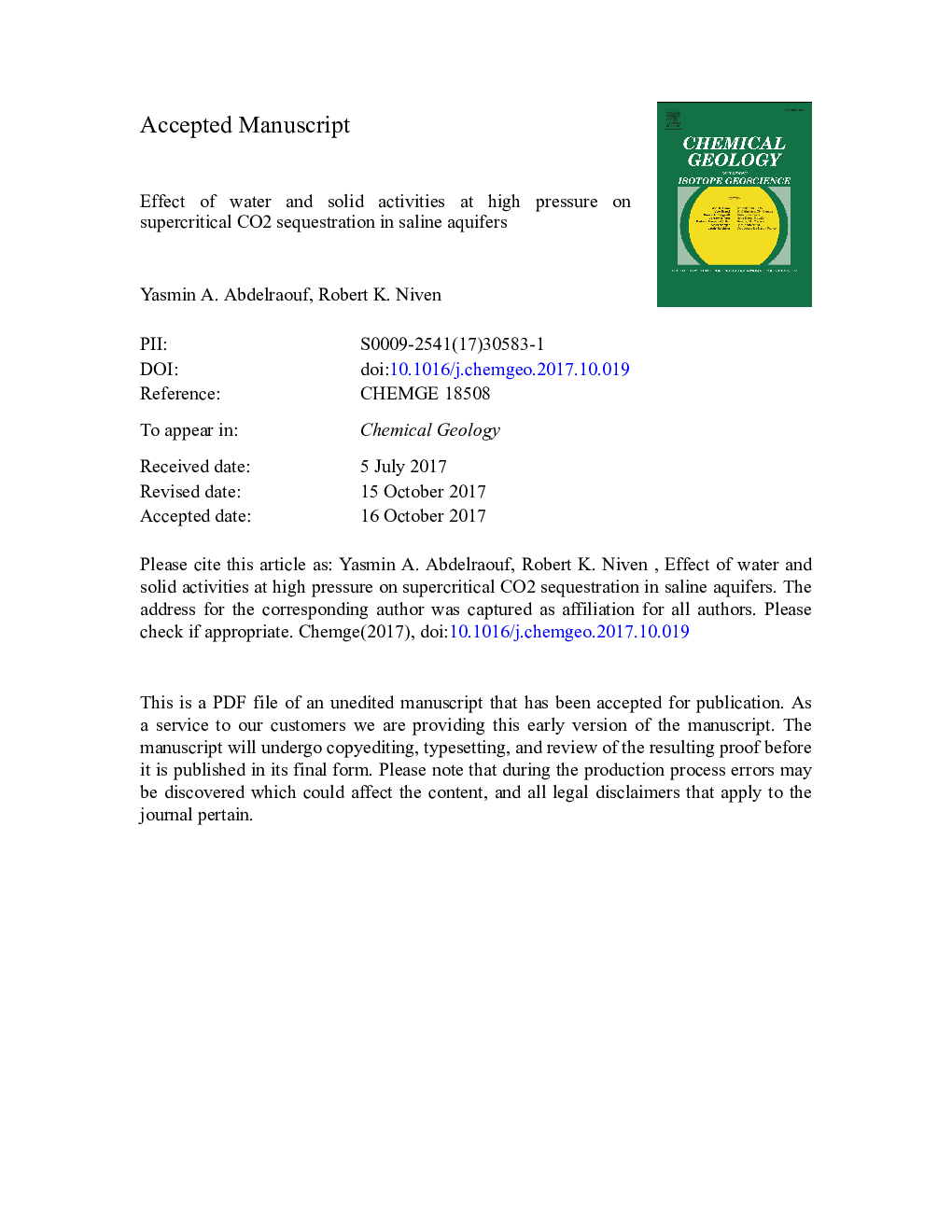| Article ID | Journal | Published Year | Pages | File Type |
|---|---|---|---|---|
| 8910442 | Chemical Geology | 2018 | 37 Pages |
Abstract
This study presents a multiphase (water, supercritical fluid and solid species) thermodynamic model applicable to the sequestration of supercritical CO2 in a saline aquifer at high pressures, which accounts for the effects of water activity, solid activity, supercritical fluid fugacity and aqueous species activities. The model is formulated using mass action laws, species and charge balances, a new correlation for species activity coefficients based on the Davies equation, supercritical fluid fugacities (Peng-Robinson equation of state), water activity (a new explicit form in terms of state variables and salinity), corrected equilibrium constants of aqueous reactions as functions of pressure, temperature and salinity, water-supercritical partitioning (Krichevsky-Ilinskaya correction to Henry's law), and a new model for water-solid partitioning. The effects of high pressures to 60Â MPa - consistent with sequestration at depths to 6000Â m - are examined in detail. The model is applied to the scCO2 - H2O - CaCO3(s) - Na+ - Clâ system, revealing substantial discrepancies between this and previous geochemical models in the effect of pressure and salinity on the chemical equilibrium constants of geochemical reactions. Several calculations of the model are compared to those of Saaltink et al. (2013) and Springer et al. (2012).
Related Topics
Physical Sciences and Engineering
Earth and Planetary Sciences
Geochemistry and Petrology
Authors
Yasmin A. Abdelraouf, Robert K. Niven,
